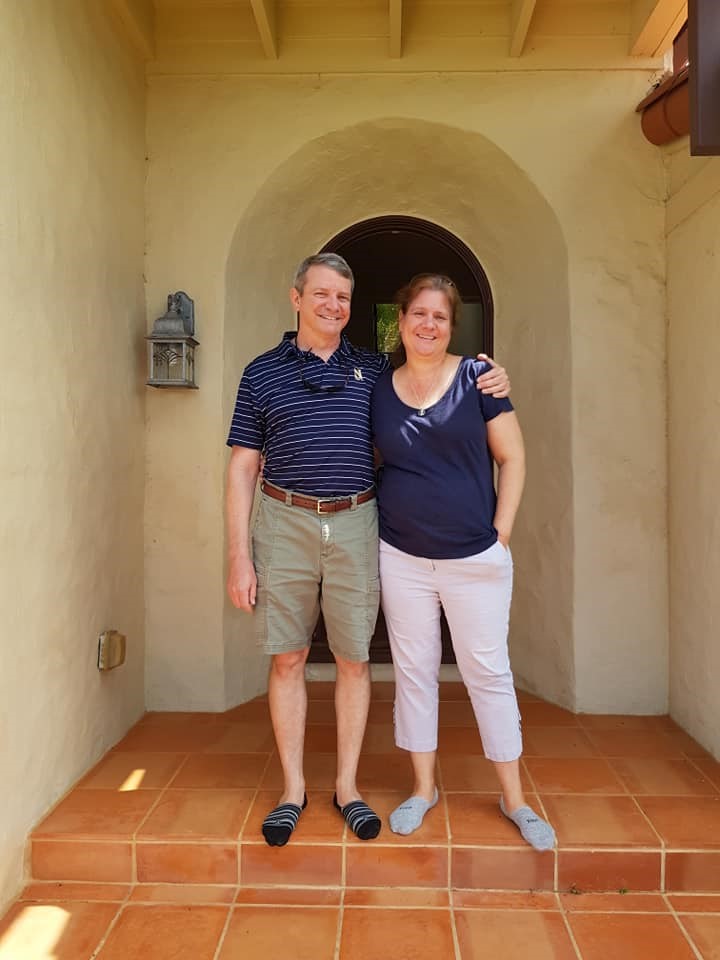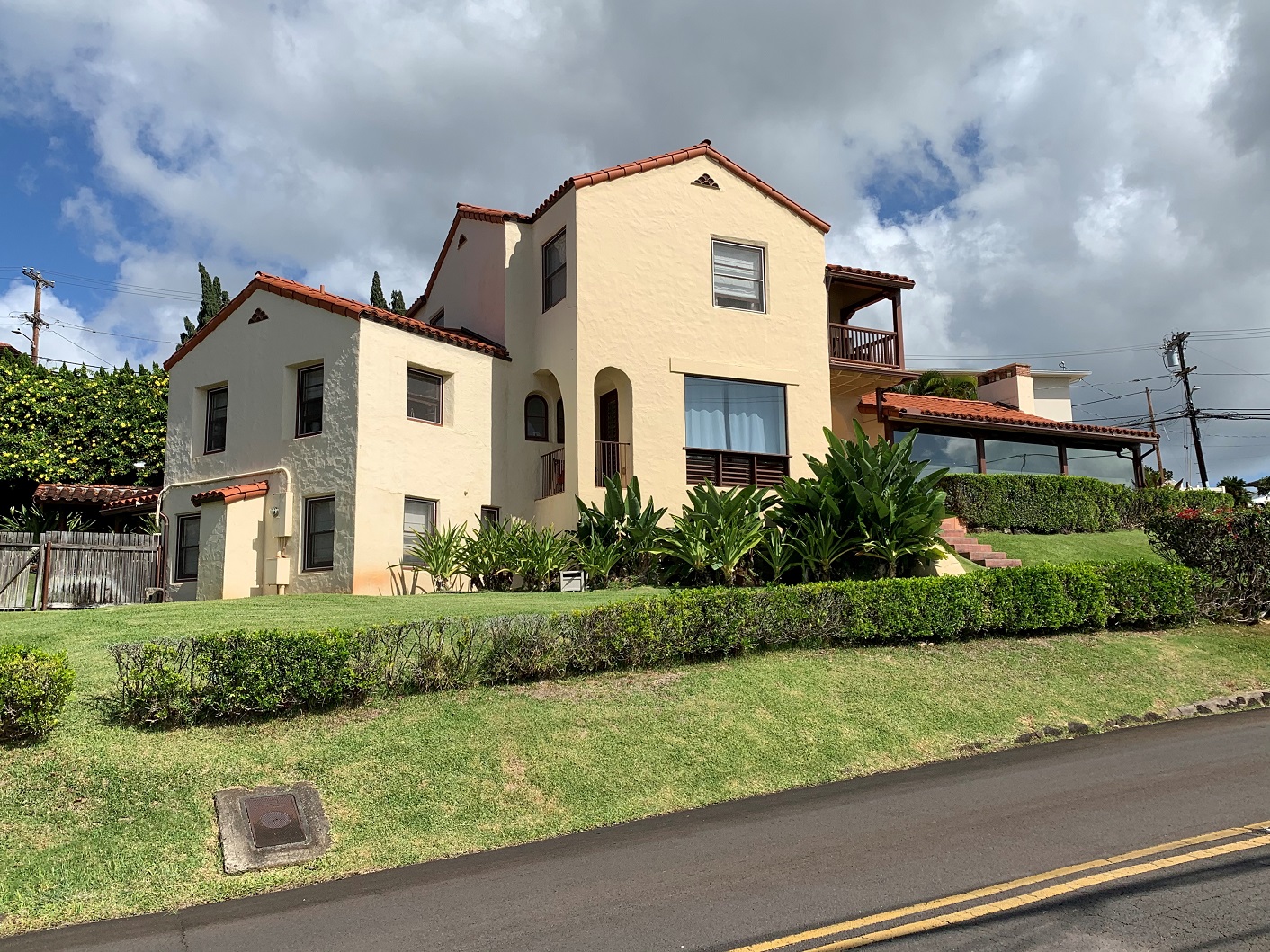Wes and Jane Guinn did not plan to buy a historic home. Wes had recently retired from active duty in the US Navy’s Submarine force and after three decades of moving every 2-3 years, the Guinns were looking forward to settling down in a “beautiful home of their own in a welcoming place”. They chose Hawai‘i and the island of O‘ahu as their destination and sought a residence that would embody the Hawaiian spirit.
We recently asked the Guinn’s to share more about their home and experience living in their neighborhood, Alewa Heights.
Historic Hawai‘i Foundation: Why did you choose to purchase a historic home?
Wes Guinn: When we made the decision to settle in Hawai‘i, my wife and I did not set out to buy a historic home. As we researched and shopped for homes on O‘ahu, we found many good, practical, modern homes, but the majority of them felt ordinary, like any house you might find on the mainland. We didn’t want just a nice house that happened to be on the island. We wanted something that felt like Hawai‘i. We learned early that we would rather have a home that better represented the beauty and the rich, diverse Pacific cultures of Hawai‘i.
This historic home invited us to plant those roots and stay and enjoy the Aloha lifestyle during our post-Navy career.
The home we found had the distinctive character we wanted, and is in a neighborhood that has many Hawaiian and Asian kūpuna living there. When we discovered that the house was on the Hawai‘i State Register of Historic Places, and read about how the house and its owners had contributed to the architectural, economic, and cultural development of Honolulu for the last 100-plus years, it made this already excellent home the perfect home for us. Its history made the house special in a more spiritual, personal way that greatly appealed to our own values of family, community, and history.
HHF: What do you love about your historic home?
WG: Since purchasing the home almost a year ago, now, we frequently discover new things to love about our home; things that make it more special because it is historic. From a practical perspective, the house is constructed to weather the Hawaiian environment of wind, sun, and salt air. The design includes thoughtful placement of doors and windows to optimize the comfort brought by the trade winds and capture the beauty of the passing sun while minimizing its potential harshness.
From a community standpoint, we love that many of our neighborhood families have been here since the house was built, and many of the neighboring homes are from the original community development. As such, we feel a genuine sense of ‘ohana and kōkua from our neighbors.
Most importantly, this historic home continually feeds our spirit. I recently retired from active duty in the US Navy’s Submarine force. My wife and I had moved every 2-3 years for the first 30 years of our marriage, living wherever the Navy sent us for exactly as long as they wanted us there. We imagined someday settling in a beautiful home in a welcoming place. This historic home invited us to plant those roots, stay, and enjoy the Aloha lifestyle during our post-Navy career. I have enjoyed sitting on the lanai looking from above at the beautiful Pacific Ocean after being under the sea for so many years.
For my wife, who loves to cook and entertain, the kitchen is the center of the home, and this historic home seamlessly flows into dining, sitting and lanai areas. Most meaningfully however, as a family so steeped in Navy tradition and respect for history, this home fits so well, with who we are and what we love.
HHF: Are there any unusual stories or pieces of history that you can share?
WG: The original lots that existed in the neighborhood when our home was built used to be much larger. There are now 3 homes on the original lot on which our home was constructed. The house next to ours is currently occupied by an older gentleman who actually grew up in our home. In our socially distanced and masked conversations we have with him, he routinely tells us stories about his life in our home as a boy and a young man. One story involves an Avocado tree. We have a large avocado tree on the property that fruited bountifully this year, yielding probably over a hundred large, savory, buttery avocados. Our neighbor informed us that that tree was originally planted sometime in the 1950s. He said that, at first, the tree produced avocados that were smaller, stringy, and less flavorful. His family cut the tree down, but did not uproot it, and the tree grew back again. The avocados from this second growing have since been larger and much higher quality. There must be a metaphor in that story!
HHF: Why did you reach out to Historic Hawai‘i Foundation?
WG: We reached out to the HHF in order to better understand how we could maintain the home’s historic character, and to make sure we understood our responsibilities as owners of the historic home. The people at HHF have been consistently friendly and responsive whenever we had questions. They are quick to provide references for all the regulations and laws associated with the benefits and responsibilities of owning a historic home. I was pleased to learn that owning a historic home is not very constraining at all. Most reasonable changes to the property that most people might want–such as installing solar panels or upgrading the kitchen–are possible.
Mahalo to the Guinns for sharing their mana‘o with us!
_________________________
Are you considering nominating your home to the Hawaii Register of Historic Places? Click here to download our helpful guide and get started.
Click here to read about the tax incentives for historic residences.
Questions about your historic property? Call us at 808-423-2900 or email member@historichawaii.org



